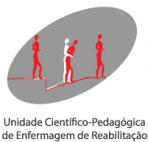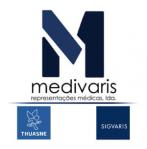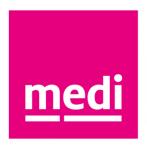Respiratory kinesiotherapy in children
Data: 22 de march de 2018
Horário: 16:00 - 17:30
Introduction:
Kinesiotherapy literally means movement therapy (from the Greek: kínesis - movement and therapeia - therapy). Although there is no standardized classification, we define respiratory kinesiotherapy as a set of techniques, maneuvers, and exercises based on the association between control of breathing, positioning and movement aimed at functional pulmonary rehabilitation.
In Pediatrics, the care recipient is not only the individual or the child but the child/family binomial. We adopted care models that reflected this idea: (Ann Casey’s partnership in care model, Meleis’ Transition Theory), taking into account the child’s age, their stage of development, their knowledge, and their ability for recovering autonomy and engaging the parents in the care delivery process.
Therefore, nursing care should involve:
• Supervising childcare, interfering as little as possible.
• Teaching parents about techniques.
• Development of nursing/family care activities.
• Referral to other professionals, if necessary.
Objectives:
• To enhance the technical and scientific knowledge of rehabilitation nursing in the area of Pediatric Respiratory Kinesiotherapy.
• To apply knowledge and skills to develop technical and scientific competences for rehabilitation nursing practice in the area of Pediatric Respiratory Kinesiotherapy.
Contents:
MOST COMMON TECHNICAL APPROACHES IN PEDIATRIC RESPIRATORY KINESIOTHERAPY
The most common approaches in pediatric respiratory kinesiotherapy are similar to those used with adults but adapted to the child/family, taking into account all factors that facilitate or hinder our intervention.
The most common techniques can be divided according to our main focus of attention.
FOCUS: VENTILATION
Respiratory Functional Reeducation Techniques - These exercises consist of a set of techniques used in respiratory kinesiotherapy for chronic or acute respiratory diseases with the purpose of improving pathophysiological changes resulting from imbalances in the ventilation/perfusion ratio, breathing control, positioning, and movement. They aim to reduce psychological and muscle tension; prevent and correct ventilation defects; prevent and correct musculoskeletal changes; improve the performance of respiratory muscles; and reeducate towards effort.
These techniques should be progressively implemented. They should begin with awareness and breathing control techniques and then move on to global or selective respiratory reeducation exercises depending on the child’s needs.
This category includes:
• Awareness and breathing control exercises (frequency, range, and rhythm): breathing dissociation; awareness of ventilation mechanics; prevention and correction of posture changes; and reduction of psychological and muscle tension.
• Global and selective exercises: abdominal-diaphragmatic breathing; rib cage joint mobilization and chest wall stretch; incentive spirometry; chest expansion; directed ventilation; selective training of respiratory muscles.
• Effort readaptation exercises.
Non-invasive ventilation (NIV)
FOCUS: EXPECTORATION AND AIRWAY CLEARANCE
Airway clearance techniques, also called bronchopulmonary hygiene or clearance.
When the child is unable to cough or expectorate effectively. These techniques aim to ensure airway permeability and are usually associated with measures to reduce secretion viscosity (hydration, fluidization of secretions) and inhalation therapies (bronchodilation, bronchospasm reduction).
Treatment should start with techniques that facilitate secretion clearance from the distal bronchi to the main bronchi and trachea. Finally, secretion removal techniques should be used.
These techniques can also be divided into two groups: secretion drainage techniques and secretion removal techniques.
These include:
• Secretion drainage techniques:
o Postural drainage;
o Percussion and vibration (manual, mechanical)
o Peak expiratory flow;
o Techniques using positive airway pressure (manual, mechanical),
• Secretion removal techniques:
o Coughing techniques;
o Forced expiration techniques (Huffs);
o Secretion aspiration.
Methodology:
Theoretical/practical approach to the most common techniques used in Pediatrics, demonstration of the most common equipment/devices (Flutter/shaker, Cough-assist, Vest, MetaNeb;...)
Trainers:
• Ana Paula Lindo Pleno
• Paulo Jorge Cruz Castelhano
Newsletter
Organization













